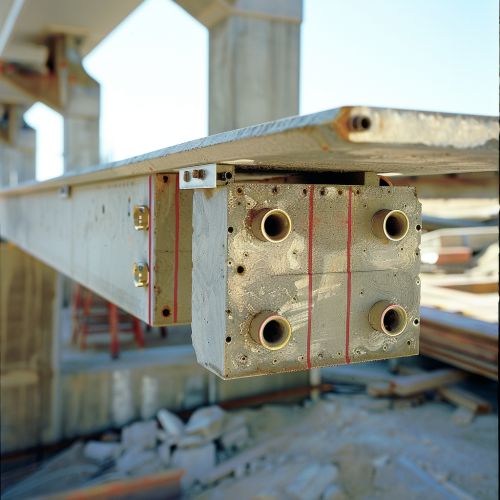Slope-Deflection Method
Introduction
The slope-deflection method is a structural analysis technique used for calculating displacements and internal forces in beams and frames. This method, developed by George A. Maney in the early 20th century, is a powerful tool in the field of structural engineering, particularly for the analysis of statically indeterminate structures.
Principles
The slope-deflection method is based on the principles of equilibrium and compatibility. It employs the relationship between moments, rotations, and displacements in a structure to derive equations for the unknowns. The method involves two key steps: the formation of slope-deflection equations and the application of equilibrium conditions.
Slope-Deflection Equations
Slope-deflection equations are fundamental to the slope-deflection method. These equations relate the moments at the ends of a member to the rotations and displacements of its ends. The general form of the slope-deflection equation for a beam is given by:
M_AB = 4EI/L * (θ_B - θ_A) + 2EI/L * (δ_B - δ_A)
where:
- M_AB is the moment at the end A of the beam due to a unit rotation at the end B,
- θ_A and θ_B are the rotations at the ends A and B, respectively,
- δ_A and δ_B are the displacements at the ends A and B, respectively,
- E is the modulus of elasticity,
- I is the moment of inertia, and
- L is the length of the beam.
Equilibrium Conditions
After the slope-deflection equations are formed, the next step is to apply the conditions of equilibrium. These conditions ensure that the sum of forces and moments at each joint of the structure is zero. This leads to a system of linear equations which can be solved to find the unknown rotations and displacements.
Procedure
The procedure for applying the slope-deflection method to a structure involves several steps:
1. Identify the unknown rotations and displacements in the structure. 2. Write the slope-deflection equations for each member of the structure. 3. Apply the conditions of equilibrium to each joint of the structure. 4. Solve the resulting system of equations to find the unknown rotations and displacements. 5. Substitute the found values back into the slope-deflection equations to find the moments at the ends of each member. 6. Draw the shear and moment diagrams for the structure.
Applications
The slope-deflection method is widely used in the field of structural engineering for the analysis of beams and frames. It is particularly useful for analyzing statically indeterminate structures, where the number of unknowns exceeds the number of equilibrium equations. The method is also employed in the design of structures, where it aids in determining the internal forces and moments that the structure must resist.
Advantages and Limitations
The slope-deflection method offers several advantages over other structural analysis methods. It is a systematic and general method that can be applied to any type of structure, regardless of its complexity. It also provides a clear physical interpretation of the behavior of the structure, as it directly relates the moments, rotations, and displacements.
However, the slope-deflection method also has some limitations. It can be quite laborious for large structures, as it requires the solution of a system of equations. Moreover, it assumes that the material of the structure is linearly elastic, which may not always be the case in real-world situations.
See Also


